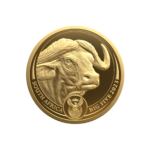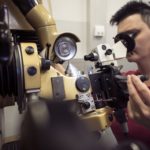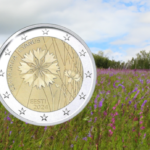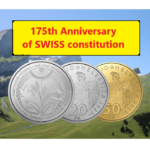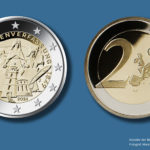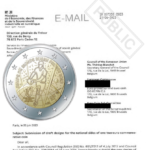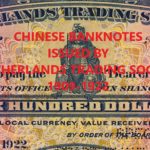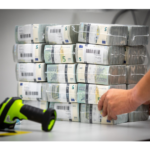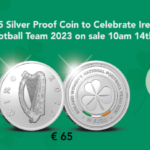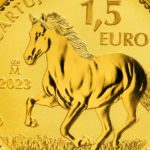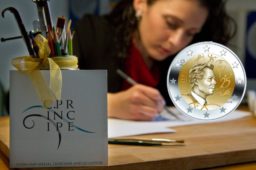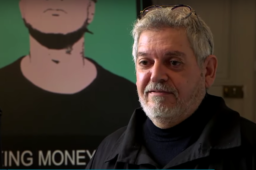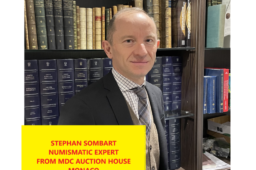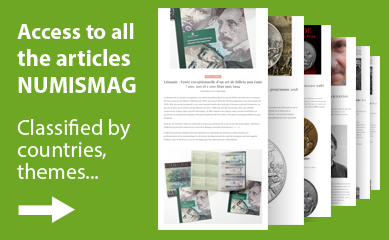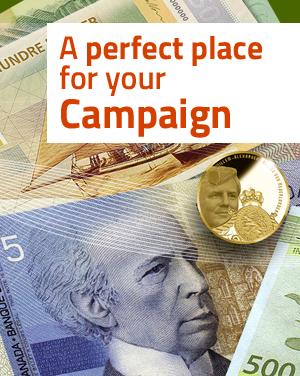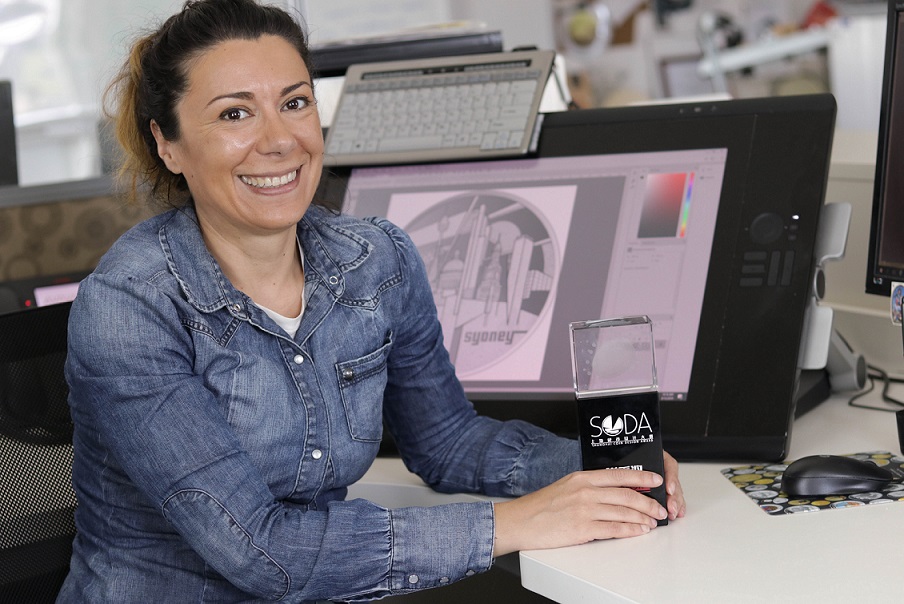
Aleksandra (Aleks) Stokic, from Roma to Canberra, a coin engraving master
- December 20, 2019
- by
- Pierre

Recently awarded for its engraving work dedicated to Sydney city, by chinese authorities, Aleksandra (Aleks) Stokic is a talented senior engraver of RAM (Royal Australian Mint). NUMISMAG took this opportunity to interview the artist.
NUMISMAG: What is your initial university background?
Aleks Stokic: After receiving a diploma in packaging design from the School of Design in Belgrade, I completed a degree in applied sculpting at the University of Belgrade. My postgraduate specialisation was in coins and medals, I also completed studies at the School of Medallic Arts in Rome.

NUMISMAG: What motivated you to work in an artistic field and why more particularly the design and engraving of coins and medals?
Aleks Stokic: My first memory of coins, as not only currency, but as something to admire, was my brother’s collection of circulating coins. I was impressed with their beauty, with the small and detailed sculpts and with the different story that each of them depicted. I often used to line the coins up and try to imagine how all those different countries might look, based on the coins. It is amazing how coins can actually describe nations. In addition to studying monument and gallery sculptures at the University of Belgrade, I also studied medals and jewellery, which was my first contact with bas relief and precious metals. After university, I decided to expand my coin and medal design skills entering a unique school in the world for coin and medal design In Rome.
NUMISMAG: Which teacher impressed you the most during your studies in Italy?
All teachers at the School of Medallic Arts in Rome are Italian Mint engravers and technicians or external teachers chosen according to their professional experience. Thus, I was lucky to have the opportunity to learn the art of coins and medals from the best. There are two professors from the school that made the biggest impact on my medallic and coin art, Italian Mint coin designers and engravers, Uliana Pernazza and Roberto Mauri. Professor Uliana Pernazza conveyed her love and passion for circulating coins, medals and the bas relief. The importance of the symbols and objects that appear on the coin, how they are composed and how they communicate to the viewer. Professor Roberto Mauri’s influence on my coin and medal design development was learning to think out of the box, constantly pushing the boundaries and applying new technologies.
NUMISMAG: What are your artistic influences?
Aleks Stokic: Everything I see and experience influences my art in some way, whether directly or indirectly. I love music and listen to music as I create each design, so certainly music is one of the big influences in my art. Often, I am inspired by the famous artists and their art works. Of course, beside Michelangelo and Rodin, I admire the Dutch painter Piet Mondrian and his representations of the world to their basic vertical and horizontal elements, represented as two essential opposing forces: the positive and the negative, the dynamic and the static. This is the same way I see the coin or medal design composition, in terms of relationship between the obverse and the reverse.
NUMISMAG: You worked for the Italian Mint. What did this experience bring you?
Aleks Stokic: After completing a three year course at the School of Medallic Arts, I have won a scholarship to work for the Italian Mint where I spent another three years. During that time I was developing concepts and models mostly for medals, drawings for stamps, jewellery, full 3D sculpts and few coin concept designs. Working there was a great experience. The Italian Mint taught me the importance of a good design, how to produce models that will coin well and unquestionably it was one of the best places to get experience to start my career.
NUMISMAG: – You have worked on medal projects for the Vatican state. Can you give us an example? Have you participated in the production of euro coins for Italy, the Vatican or San Marino?
Aleks Stokic: In 2009, I was the finalist at the International competition for the Design of Papal Liturgical Paraments. I made the design for Papal mitre which is a type of headgear, a ceremonial head-dress of bishops and certain abbots in traditional Christianity. Besides the design for the mitre, I have also designed the rationale, a kind of broche which is a part of liturgical vestment.
In 2010 and 2011, as a part of a junior coin design team at the Italian Mint, we developed concepts for Vatican Pontifical Medals. One dedicated to Pope Benedict XVI with a theme “Charity in Truth” and second celebrating the 60th anniversary of the priesthood of Joseph Ratzinger. Unfortunately the concepts have never been translated into a medal. Yet, having the opportunity to work on projects for the Vatican state taught me a lot about symbols in religion, their meaning and how those symbols were communicating the religion through art across the centuries.
For the Italian Mint, I have produced concepts and 3D models for the reverses for the Council of Rome medals. Those medals are produced each year commemorating the birthday of the City of Rome.
Every year the medals have a different theme. In 2009, the theme of the medal for the 2762nd birthday of Rome was the Centenary of the Futurist Manifest while, in 2011 the theme of the medal that commemorated the 2764th birthday of Rome was 150th Anniversary of the Unity of Italy.
NUMISMAG: May you tell us about your 2009 zodiac coin project and its realization by the Japanese Mint?
Aleks Stokic: Each year, the Japanese Mint holds the International Coin design Competition. In 2009, I participated in the competition with a design that commemorates the International Year of Astronomy. That year celebrated the 400th anniversary of the first recorded astronomical observation with a telescope by Galileo Galilei.

What makes that design interesting is the relationship between the obverse and reverse.
The obverse side depicts Galileo Galilei observing the Moon with his telescope while the reverse side depicts the Moon through the Galileo’s telescope. The telescope represented on the coin is based on Galileo’s originals telescope from the Galileo’s museum in Florence and the Moon is a reproduction of his drawing based on observations with a telescope he made in 1610.
So the obverse and the reverse actually give the viewer the ability to see what that first telescope observation looked like, it actually brings you back to the 17th century.
Five coin design concepts including mine were chosen to go the final stage of the competition. For the final stage I had to develop the 3D model in plaster. The Japanese Mint produced the coin based on my design and model. That year at the International Coin Design Competition, I received the Future Designer Award.

NUMISMAG: What is the impact of the numismatic award you recently received in China on your professional life?
Aleks Stokic: I am happy and proud of the coin design award that I received in China. It is always nice to be recognised for my work as well as when someone appreciates or connects with what you have done. I am particularly proud that I competed representing The Royal Australian Mint.

NUMISMAG: Why did you choose the city of Sydney as the subject of your work?
Aleks Stokic: The competition wasn’t limited to a specific subject or content, so it was quite challenging to decide what would be the subject of the coin. As the competition was international, my wish was to produce a design that represented Australia. I will never forget the impression I had the first time I arrived in Sydney. The busy CBD with the mixture of modern skyscrapers, stunning heritage buildings and beautiful Victorian houses in the sprawling Sydney suburbs, which are represented on my coin design.
The obverse shows Sydney’s CBD and the composition of the buildings, it’s quite dynamic and vertical as a contrast to the reverse which shows the quiet suburbs with a static horizontal composition.

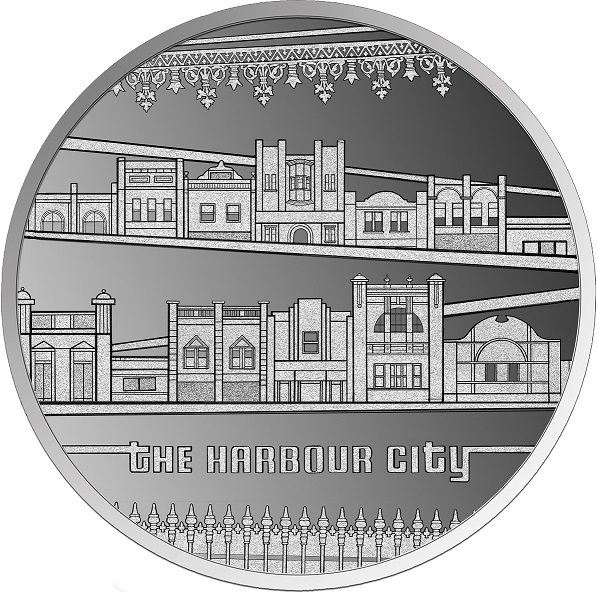
NB: RAM official, Misses Heather McGIRR, added that, at this stage, there is no confirmation regarding whether or not this coin design will be produced into a coin.
NUMISMAG: Do you think this project can result in a coin?
Aleks Stokic: There is a possibility that this design appears on a coin. I would really enjoy sculpting the 3D model for that design and of course would love to see it as a coin. Preferably as a silver proof coin with lots of different frosting.
NUMISMAG: What is the most beautiful coin you have designed for the Royal Australian Mint?
Aleks Stokic: It is really hard to say which coin is the most beautiful coin I ever made, as each coin is different. The themes, blanks and coining techniques vary, I am also constantly changing as a person and as a designer.
My skills are continually developing, innovations in technology also influence my approach to coin designs and models. The goals that I want to achieve in my work are now very different from the goals I had a few years ago. I believe if there ever comes the moment where I don’t have anything more to explore, to learn or to challenge myself, my art will stop.
If I did have to choose one coin that I am particularly proud of, that would 2019 50c “International Year of Indigenous Languages” coin.

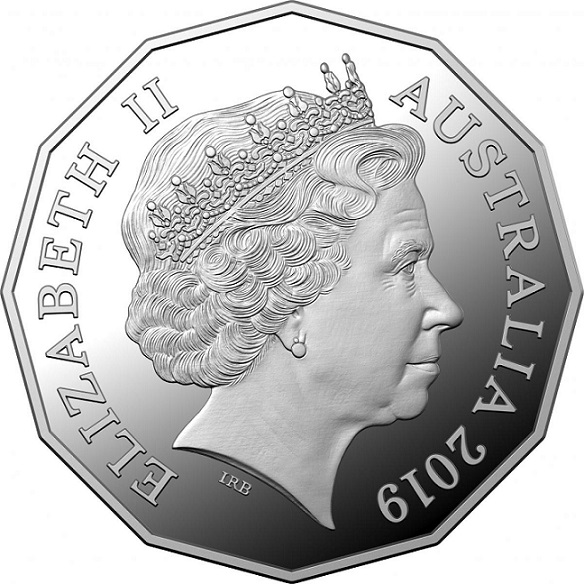
That coin design is very special to me. The coin depicts and reflects not only some of the many Indigenous languages, but also the Indigenous art and culture. I was inspired by the symbols and icons that Indigenous people used through the centuries to convey their stories. Every individual letter among the Indigenous words on a coin is sculpted by hand, again reflecting the nature of the Indigenous art.
NUMISMAG: How is organised your work at the Royal Australian Mint?
Aleks Stokic: As the Senior Coin Designer and Sculptor at the Royal Australian Mint my work starts with the coin design brief, which includes the theme of the coin, denomination, size of the blank, type of the metal or alloy, mintage, and whether there are any particular technical requirements. After meeting a product owner and discussing the brief then we start with developing coin design concepts, usually starting with sketching. I personally like to sketch using pencil and paper.
If I am happy with an idea and the composition then I start digital drawing, using different design and drawing software, where I finalise the drawing, add details, text and the denomination. Also those programs are great for adding the effects like proof background, different frost or a colour print as those effect would be hard to get with the traditional drawing techniques.
Once finalised, coin design concepts are sent for approval to a client which can be internal or external. If the coin design concept is accepted and approved, the next stage is 3D modelling.
Again 3D models as coin design concepts can be done traditionally or digitally.
When I joined the Royal Australian Mint, I was developing models only traditionally, in plasticine and plaster, casting positives and negatives.
Nowadays, I almost always sculpt digitally, using different 3D modelling software. I really enjoy digital sculpting. It is similar to a traditional sculpting. Digital sculpting bypasses the traditional clay to plaster method, adds the ability to make later design refinements without having to re-do time-consuming steps, and it skips the high resolution scanning stage.
Also in digital sculpting there is my favourite Ctrl+ Z function. Whenever I have time, I always like to go back and model in plaster and plasticine. Portraits are my favourites to sculpt traditionally.
When the final 3D model for a coin is finished and approved by Research and Development, the model is sent for die cutting. Coin designers at the Royal Australian Mint also think about polishing and frosting, developing die polishing instructions. Polishes and frosts for the dies are in some way like the colours for the painting. Different polishes and frostings are applied to the surface of the die to create the contrast within the design elements and are contributing to the overall beauty of the design and sculpt.
NUMISMAG: What would you prefer: to work on a small coin or on a medal with a larger blank? For what reasons?
Aleks Stokic: I like to work on both. Even they are both often the same shape, round, in bas- relief they are quite different. Coins require more production knowledge, great sculpting skills to deal with extremely low relief and there are a lot of technical limitations too.
Medals provide a lot of freedom to a sculptor. They are bigger in size, it is like painting on a big canvas. Relief heights are bigger, there is no zero plane or a medal field which gives a possibility to sculpt in the positive and the negative.
Medals could be cast which gives even more freedom in sculpting according to a medals that are formed under the press. In a few words, more fun. As I do like challenges and if I had to decide what would be my preference, it would be circulating coins for sure.
NUMISMAG: Have you ever worked in direct cutting? On which project?
Aleks Stokic: When I was studying in Rome, direct cutting was a part of the triennial course. I have made few dies and punches in direct cut engraving as a part of the course. I also did direct cut engraving in gemstone. One of the subjects I had during my studies at the School of Medallic Arts in Rome that I really enjoyed was so-called “intaglio printing”. It is a technique consisted of engraving a copper plate by hand and then covering it in ink to print the bank notes. That technique was used for banknote printing.
NUMISMAG: What was the most difficult project of your career?
Aleks Stokic: Each coin is special to me. Every design is a new challenge. That can be a theme, size of the coin or type of the metal. I like challenges in the design, and for me, those are circulating coins. Some of the most challenging projects of my career have also involved technological innovation as well as designing curved and triangular coins.
NUMISMAG: Some Mints have produced coins with a high relief engraving during last months. Are you tempted by a project of this type?
Aleks Stokic: In the market within the last few years the number of the coins with the high relief is increasing and the heights of the relief are also progressively higher. It is quite amazing what possibilities in coining we have today compared to what could be coined even 10 years ago. The relief heights on some of the coins are almost going to a full 3D. Coins are becoming more and more objects of art and I would absolutely love to have an opportunity to work on one of those high relief coins.
NUMISMAG: Is there a technological innovation you would like to work on?
Aleks Stokic: In my work I continuously look for challenges and technological innovations are certainly one of the biggest tasks. High relief coins are always ones to enjoy as there is plenty of relief height to make stunning sculpts.
As a technological innovation challenge I would like to work on a project where I am able to combine different mediums, where I will need to develop a new skill and push my boundaries. It would be great to one day have an opportunity to work on something that would make a radical change in the coining industry.

Sources: RAM (Royal Australian Mint) and NUMISMAG©.
